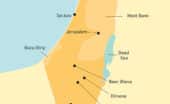Re The UN General Assembly Speaker Schedule is Here! I note that whoever will be speaking for Canada this year…
How Canada made the G20 happen
Written by Diana Thebaud Nicholson // June 18, 2010 // Globalization // Comments Off on How Canada made the G20 happen
John Ibbitson and Tara Perkins: How Canada made the G20 happen
The expanded group of leaders from Western and developing nations might never have existed, and certainly not in its current form, without a long, determined push from Paul Martin.
Paul Martin sat in Lawrence Summers’ spacious office in the Greek-columned U.S. Treasury building in Washington, searching in vain for a piece of paper. With none in sight, the two men grabbed a brown manila envelope, put it on the table between them, and began sketching the framework of a new world order.
It was April 27, 1999. For the past five years, the global economy had shuddered under a string of massive debt defaults – first in Mexico, and then in Southeast Asia and Russia.
In each case, Western leaders and bankers responded by prescribing harsh fixes, throwing one developing economy after another into recession.
As crisis followed crisis, Mr. Martin, then Canada’s finance minister, became convinced that major developing nations had to be given a voice – not just an ultimatum – when it came to discussing their place in the global economy. But in the capitals of Europe and the corridors of Washington, the answer was always the same: It’s our club, and there are no vacancies.
Or at least it was the same answer until that April day when Mr. Martin visited Mr. Summers, then Bill Clinton’s nominee for treasury secretary, to press his case. He argued that they couldn’t keep imposing solutions on developing countries. The G7 had to be expanded – at least at the finance-ministers’ level.
Mr. Summers quickly agreed. But that was the simple part. Much thornier was the issue of who would be admitted to the club.
With the manila envelope in hand, the two began jotting down countries. China, India, Brazil, Mexico – these were obvious choices. So was South Africa, the biggest economy on its continent. But who else?
“I felt very strongly that it had to be the regional powers,” recalls Mr. Martin. “Larry felt that, and then he also had geopolitical concerns. I would love to say we sat down and ran the numbers on whose GDP was bigger, but we didn’t. We both had a pretty good perspective on where things lay.
“ You didn’t have to have the statistics to know which country was pretty important. ”— Paul Martin
Thailand was the nexus of the Asian banking crisis, but Indonesia was more influential in the region. Indonesia in; Thailand out. Chile was tempting, because it was democratic and well-run, but Argentina was a bigger player. Argentina got the seat. Saudi Arabia was strategically important and a good friend of the United States. The Saudis would get an invite.
So it went until they had compiled a working list of roughly 20 countries – literally, a back-of-the-envelope blueprint for what would become, today, the most powerful forum on economic and political matters in the world: the G20.
When the G20 convenes in Toronto on June 26, it will mark the culmination of a long, and unlikely story, one that began with an annual gathering of finance ministers and evolved into a semi-annual meeting of world leaders from 19 nations (yes, not 20 – see sidebar for the inside story). Collectively, they represent 70 per cent of the global population and 90 per cent of the global GDP.
The G20 enters its second decade with enormous potential but many unanswered questions. The world will watch as these leaders try to carry on the task of shepherding a fragile economic recovery: As a group, they have the power, but can they wield it?
Still, the meeting this month is only possible because a Canadian finance minister convinced leaders of the G7 consortium of developed nations to become a larger, more inclusive group. There has never been a proper accounting of how the G20 came to be: the struggles that led to its birth; the early failure of Paul Martin to convert it from a finance ministers’ club into a leaders’ forum; and then the sudden recognition, at the height of an economic crisis, that Mr. Martin’s idea was one whose time had come.
Present at the creation
In May of 1998, Mr. Martin hosted a dinner for Anwar Ibrahim, because he thought Malaysia’s finance minister had something vital to say. The soft- and plain-spoken man’s message galvanized the senior figures in Finance, the Prime Minister’s Office and the Privy Council Office who were in the room.
The lessons, rules and prescriptions that applied to many developed nations, he told them, were not necessarily applicable to the developing world. How could Malaysia raise taxes, as the International Monetary Fund was demanding, when the country had only just managed to create a tax system, and no one would be able to pay the taxes the West was demanding?
“It was simple stuff, but it made you realize that you really need to understand these people and have them at the table and understand what is going on in their economy,” remembers Terrie O’Leary, who was Mr. Martin’s chief of staff at the time. Creating that kind of understanding became, for Mr. Martin, a crusade.
Meanwhile, contagion was spreading throughout global markets. The shocks of the Mexican peso crisis sucked Argentina and Brazil into its wake. The Asian financial crisis stretched from Thailand to South Korea. And Russia’s ruble crisis threatened to disrupt the increasingly intertwined economies of Europe and the United States.
“It was clear that the plain, ordinary regulatory apparatus that we had internationally was not working very well,” recalls David Dodge, who was Mr. Martin’s deputy at Finance, and later governor of the Bank of Canada.
Yet change, at first, was tentative. At meetings of the G8 (which is what the G7, a gathering of finance ministers, becomes when it’s a meeting of leaders and Russia joins in), developing-world leaders were invited to attend as guests.
Along with Mr. Martin, Gordon Brown, then Britain’s Chancellor of the Exchequer, was a strong proponent of giving the emerging nations a voice. There were two obvious ways: Reform the International Monetary Fund, and expand the G7/G8. They decided to split the jobs.
The British would concentrate on the notoriously unwieldy IMF. “It was too formal, there were too many people,” recalls Gordon Thiessen, who was Governor of the Bank of Canada through the currency crisis and the forming of the G20. At a typical IMF meeting, “There must have been 500 people in the room. …There used to be little wars about who was going to get chairs.”
Canada, meanwhile, would train its efforts on the G7/G8.
“What you had was really very Eurocentric … and it didn’t make a lot of sense,” says Robert Rubin, who was Mr. Clinton’s treasury secretary before Mr. Summers. Five of the eight members were European: Germany, Great Britain, France, Italy and Russia, balanced by the United States, Japan and Canada.
Negotiations over the G20 pitted the Anglosphere nations against the Continent. The Germans and the French, in particular, feared that additional members would dilute their influence on the world stage.
“The French were so annoyed,” recalls Ian Bennett, now president of the Royal Canadian Mint, but then an associate deputy minister, who did much of the legwork in establishing the forum. “They hated it.”
But deteriorating economic conditions overpowered the dissent. On Sept. 25, 1999, just five months after Mr. Martin and Mr. Summers sketched out their vision of an expanded group of finance ministers, the G20 was officially unveiled – with Mr. Martin as the inaugural chair.
Mr. Rubin argues that the Americans were as committed to the idea of the G20 as Canada was, though he describes Mr. Martin as a “very strong voice.” But there was an important reason for handing the reins to Canada: The U.S. didn’t want to be seen as dictating to the Europeans.
“There was a sense that this would be better if it wasn’t a completely American initiative,” says Mr. Thiessen. “So Paul became the guy who was front and centre, and Canada more generally, in organizing this.”
Canada, of course, had its own stake: This nation entered the G7 in 1976 more or less by accident – the Europeans wanted to add Italy, and the Americans agreed on the condition that Canada be admitted as well. But by the late 1990s, if any country was bumped out to make way for China or India, Canada could be among the first to go. With the G20, the country was firmly anchored, and Canada’s role in helping forge it gave it special prominence.
But along with that status, Mr. Martin also inherited the sensitive, and often tortuous, task of helping guide the final selection of inductees. There were howls from some countries that were not invited, especially, of course, in Europe.
“If you give more to some people, somebody has to give something up,” explains Mr. Rubin. “But that didn’t sit so well, in particular with some of the smaller countries.”
Jim Peterson, who was then a secretary of state under Mr. Martin, recalls walking into the finance minister’s office and hearing him yell down the telephone: “Once and for all, Holland is not getting on the G20, and that’s all there is to it!”
Breakthrough in Montreal
To placate the chagrined Europeans, the first meeting of the G20 finance ministers took place in Berlin in December, 1999. The ministers talked about exchange rates, the impact of government debt on national economies, and the mixed promise of globalization, but things went badly – Germans and Canadians struggled over who was really in control, and the meeting was awkward and inconclusive.
Part of the problem was that the new arrivals had been accustomed to sending large delegations to international gatherings, with outcomes scripted in advance. But Mr. Martin wanted a more informal and effective environment, in which only finance ministers, deputy finance ministers and governors of central banks would be allowed in the room.
When it came Canada’s turn to host the G20 ministers in Montreal in 2000, Mr. Martin hatched a scheme. First, he phoned each of his Western counterparts with a blunt message: This would not be a meeting of the G7 ministers and some guests. Everyone would have an equal seat at the table: “We’re now the G20, period,” he repeated over and over. “There is no G7 at this meeting.”
Then he called Mr. Summers and South Africa’s finance minister, Trevor Manuel, to warn them he was going to talk about agriculture. Africa and the U.S. were (and still are) at odds over agricultural exports. The Americans wanted the Africans to drop tariff barriers to their manufactured goods, yet refused to drop tariffs against African agricultural imports.
“I said: ‘Guys, I’m going to raise the issue of agriculture,’” Mr. Martin recalls. “’I would like you guys to really have at each other.’ And they did, magnificently. Manuel was terrific, and so was Larry, and that really set the tone. All of a sudden there were no-holds-barred discussions.”
Mr. Summers, who is now Barack Obama’s Director of the National Economic Council, remembers that debate. “Paul really did force, as chair, the acknowledgment of elephants in rooms,” he says. “He was very good that way.”
“ That was Paul Martin’s great success. ”— Gordon Thiessen, former Governor of the Bank of Canada
“We actually had … debates going across the table. It was one of the best international meetings I was ever at.”
Canada further strengthened its role by hosting the third meeting in November of 2001. India had been supposed to play host, but in the wake of the Sept. 11 terrorist attacks, no one wanted to fly that far; the Americans refused to go overseas at all. So the club met in Ottawa, where the ministers developed an action plan to combat the financing of terrorist organizations – something the smaller group of developed countries could never have done on their own. The G20’s legitimacy grew.
Gradually, the G8 leaders began to concede, at least implicitly, that their own small club was becoming unfashionable. At Evian in 2003, French President Jacques Chirac invited 11 Third World nations to discuss development.
James Wolfensohn, who was then the head of the World Bank, was there, and recalls a moment that presaged a changing of the guard, involving Luiz Inácio Lula da Silva of Brazil.
“President Lula, in a very charming way, said: ‘Listen, you guys, it’s very good of you to invite us here. But maybe you should hold next year’s meeting in Rio, so that you can get used to the fact that in five or 10 years time, four or five of you are not going to be here.’”
‘I go to too many meetings already’
By 2004, when Mr. Martin became prime minister, he wanted the G20 to become more than a forum for finance ministers to co-ordinate support for the global economy. He wanted to expand it, on the model of the G8, to include the leaders of developing countries. The new gathering would supplement, not replace, the G8. It could meet regularly or on an ad-hoc basis. It could be based on the G20, or there could be additions or deletions.
Countries outside the G8, not surprisingly, were eager from the start. On Dec. 11, 2003, the day before he was sworn in as prime minister, Mr. Martin met in Ottawa with Chinese Premier Wen Jiabao. In January, 2005, Mr. Martin visited India to discuss the idea with Prime Minister Manmohan Singh, who had complained publicly about being invited to attend G8 meetings like a supplicant before his betters. Brazil’s Mr. da Silva had echoed the protest.
But within the G8, it was another story. Its supporters pointed out that the club had been doing a pretty good job of containing inflation, managing exchange rates and essentially guiding the global economy for more than two decades.
Mr. Martin recalls that when he dined with Junichiro Koizumi in Tokyo two days prior to his India visit, the Japanese prime minister’s view was, “Okay, I will go along with this, but let’s do it for one meeting and we’ll see if it works.”
The British were onside, but the French preferred a G13 that would include only China, India, Brazil, Mexico and South Africa.
Mr. Martin pointed out that this would leave the Muslim world outside the door.
As for the Americans? “I go to too many meetings already,” George W. Bush reportedly told Mr. Martin, though Mr. Martin himself doesn’t recall that statement.
Indeed, even Mr. Martin felt jet-lagged, shuttling between APEC and the G8 and the UN General Assembly and the Commonwealth and the various hemispheric forums. But Mr. Wolfensohn, the former World Bank head, maintains that “meeting fatigue” was a red herring. The G8 members, apart from Britain’s Gordon Brown, simply didn’t want to let anyone else in.
“They didn’t mind getting advice from 20 finance ministers,” he says, “but if you broadened that to include 20 leaders, that was a different proposition.”
With Mr. Martin himself increasingly distracted by domestic political alarms, hopes for a G20 leaders’ forum withered. But after his defeat at the hands of Stephen Harper in January of 2006, Mr. Martin revived the campaign, relentlessly raising the subject in speeches and in foreign meetings. To some, he was becoming tiresome.
“With this obsession over the [G20], he’s starting to turn into the tedious drunk at the global village tavern, rattling on about the glory days when he and Larry Summers saved the world economy from near-ruin,” an Ottawa Citizen columnist wrote on Nov. 1, 2008. “He needs to give [it] a rest.”
Two weeks later, the G20 summit was born.
Riders on the storm
November, 2008: Investment banks were failing or being bailed out throughout the United States and Europe. Markets were in free fall and home foreclosures skyrocketing. Credit was paralyzed because no bank trusted the survival odds of any other bank. Businesses couldn’t get loans. The world was in clear and present danger of plunging into a depression that could rival the Great one.
George W. Bush was the lamest of lame-duck presidents, marking time until the inauguration of Barack Obama, yet he had to act if the American economy were to be rescued and the global one preserved. He needed to convene a meeting of world leaders, to co-ordinate a global response to the crisis. But who should he invite? Luckily, a ready-made solution was sitting on the shelf: Paul Martin’s G20.
“If you didn’t have that model, it probably would have been very difficult,” Robert Rubin believes. “Because you needed to get [world leaders] together very quickly.”
The first expanded G20 summit – one that gathered political leaders, not merely finance ministers – convened in Washington on Nov. 15, 2008, leading to agreement on “closer macroeconomic co-operation” – which meant that every country in the G20 would pump billions (in some cases, hundreds of billions) of dollars into their economies, while guaranteeing the solvency of their banks.
It worked. There was no new Great Depression, and some countries – the big emerging ones, especially – even managed to avoid a recession. The meeting was so successful that G20 leaders convened again in London and in Pittsburgh in 2009. In Pittsburgh, the leaders “designated the G20 to be the premier forum for our international economic cooperation,” Bye-bye, G8.
Not overnight, of course. While many, including Mr. Manuel, who is still a minister in the South African government, believe that “the club is fading,” others still question the G20’s legitimacy. After all, none of the world’s other nations authorized it to speak for them. Yet no other organization properly recognizes the emerging economies that are, in many cases, larger and healthier on some levels than those of the old powers. Mr. Wolfensohn predicts the G20 will grow in strength with every passing year.
Of course, with this increase in influence, there’s also an increasing struggle for power within the group itself. Observers expect some fault lines to sharpen in Toronto next week.
Nevertheless, Mr. Summers’ voice is tinged with pride when he recalls the day George W. Bush called the leaders of the G20 to Washington: “I showed my wife and my kids – I still had a G20 windbreaker and a little G20 carrying case from Paul’s meeting in Montreal,” he recalls.“And I said: ‘I was part of starting this, along with Paul Martin, and look what’s happened to it now.’”
John Ibbitson is The Globe and Mail’s Ottawa bureau chief. Tara Perkins is the Financial Services reporter for Report on Business.



